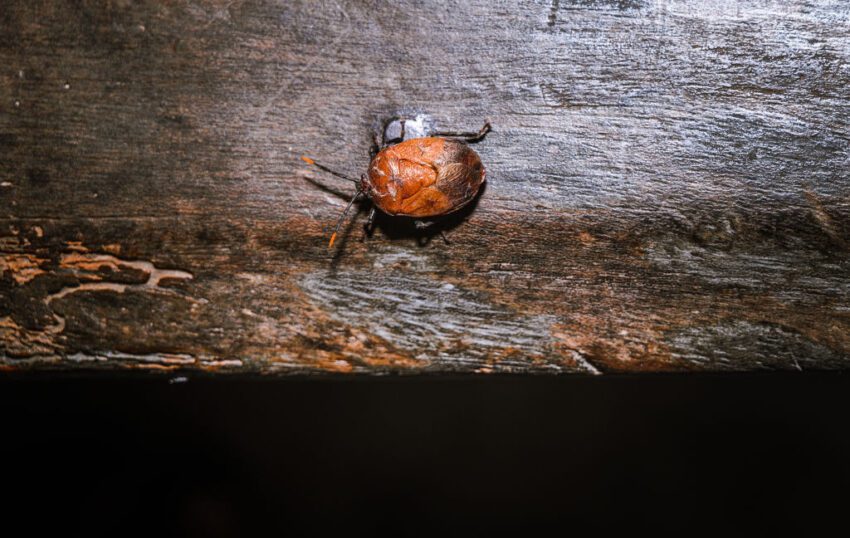
some stinkbugs legs carry a mobile fungal A recent study has uncovered that the hind legs of certain stinkbugs serve as mobile fungal gardens rather than the tympanal organs previously believed to be used for hearing.
some stinkbugs legs carry a mobile fungal
Background on Stinkbugs and Tympanal Organs
Insects have evolved a variety of specialized structures to adapt to their environments, and one such adaptation is the tympanal organ. This organ functions similarly to the human eardrum, allowing insects to detect sound vibrations. Found in various insect species, including grasshoppers, mantises, and moths, tympanal organs are typically located on the body in areas that facilitate sound reception. For many years, researchers believed that female stinkbugs from the Dinidoridae family possessed these organs on their hind legs, which are positioned differently than those of other insects.
The Dinidoridae family, which includes a small number of stinkbug species, is primarily found in Asia. While these insects have garnered some scientific interest, they have not been studied as extensively as their larger relatives, such as the Pentatomidae family. This lack of attention has left many aspects of their biology and behavior largely unexplored. The assumption that female Dinidoridae stinkbugs use their hind leg tympanal organs to listen to male courtship songs has been a longstanding hypothesis in entomology.
Research Findings
Investigating Megymenum gracilicorne
A team of researchers from Japan set out to investigate the structure and function of the hind leg organs in the Megymenum gracilicorne species, a member of the Dinidoridae family. Their aim was to confirm whether these organs indeed functioned as tympanal organs for sound detection. However, upon closer examination, the researchers made a surprising discovery: the structures were not tympanal organs at all but rather mobile fungal nurseries.
According to Takema Fukatsu, an evolutionary biologist at the National Institute of Advanced Industrial Science and Technology in Tokyo, the initial focus of research on Dinidoridae stinkbugs had been primarily taxonomic and morphological. Previous studies had described the enlarged structures on the hind legs of female stinkbugs, noting their resemblance to tympanal organs found in crickets. However, the new findings challenge this long-held belief and open up new avenues for understanding the ecological roles these structures play.
Characteristics of the Mobile Fungal Gardens
The mobile fungal gardens discovered on the hind legs of Megymenum gracilicorne are unique in their composition and function. These structures serve as nurseries for specific fungal species, which have not been observed in other insects before. The fungi thrive in the moist environment provided by the stinkbug’s legs, allowing them to grow and reproduce effectively.
This symbiotic relationship between the stinkbugs and the fungi raises intriguing questions about the evolutionary advantages it may confer. The fungi could potentially provide benefits to the stinkbugs, such as enhanced nutrition or protection from pathogens. In turn, the stinkbugs offer a mobile habitat for the fungi, allowing them to spread and thrive in various environments.
Ecological Implications
The discovery of mobile fungal gardens on stinkbugs has significant ecological implications. It suggests that the interactions between insects and fungi are more complex than previously understood. This relationship may influence the dynamics of ecosystems where these stinkbugs are found, particularly in terms of nutrient cycling and species interactions.
Insects play crucial roles in ecosystems, serving as pollinators, decomposers, and prey for other animals. The presence of mobile fungal gardens could enhance the ecological roles of stinkbugs, allowing them to contribute to the health of their environments in new ways. For instance, the fungi may help break down organic matter, enriching the soil and promoting plant growth.
Stakeholder Reactions
Scientific Community
The findings have generated considerable interest within the scientific community. Researchers are eager to explore the implications of this discovery further and investigate other insect species that may exhibit similar relationships with fungi. The study highlights the need for more comprehensive research on lesser-known insect families, which may hold valuable insights into ecological interactions and evolutionary processes.
Conservationists
Conservationists are also paying attention to the implications of this research. Understanding the intricate relationships between insects and fungi can inform conservation strategies aimed at preserving biodiversity. As ecosystems face increasing pressures from climate change and habitat loss, recognizing the roles of various species, including those that may have been overlooked, becomes crucial for effective conservation efforts.
Future Research Directions
The discovery of mobile fungal gardens on stinkbugs opens several avenues for future research. One area of interest is the specific types of fungi that inhabit the legs of Megymenum gracilicorne. Identifying these fungi and understanding their life cycles could provide insights into the evolutionary history of this symbiotic relationship.
Additionally, researchers may investigate whether other species within the Dinidoridae family exhibit similar adaptations. Comparative studies could reveal patterns of evolution and specialization among stinkbugs and their associated fungi. Such research could also extend to other insect families, potentially uncovering a broader range of insect-fungi interactions.
Conclusion
The revelation that the hind legs of certain stinkbugs serve as mobile fungal gardens rather than tympanal organs marks a significant shift in our understanding of these insects. This discovery not only challenges long-held assumptions but also highlights the complexity of ecological interactions. As researchers continue to explore the implications of this finding, it is clear that the world of insects is far more intricate than previously thought. The relationship between stinkbugs and fungi serves as a reminder of the interconnectedness of life and the importance of studying even the smallest organisms to gain a fuller understanding of our ecosystems.
Source: Original report
Was this helpful?
Last Modified: November 5, 2025 at 12:36 am
2 views














